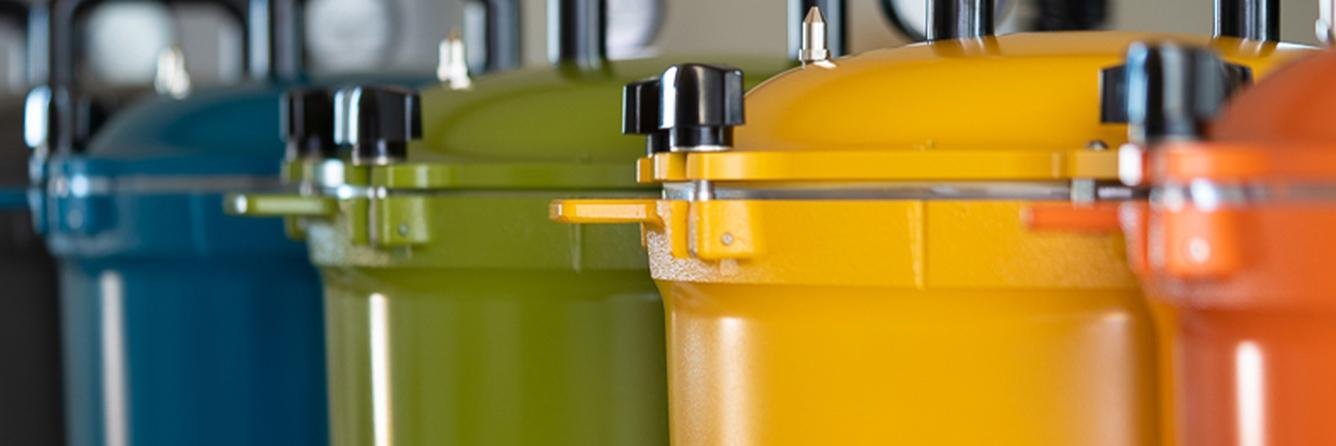
All American 1930 vs. Presto Pressure Canner Comparison
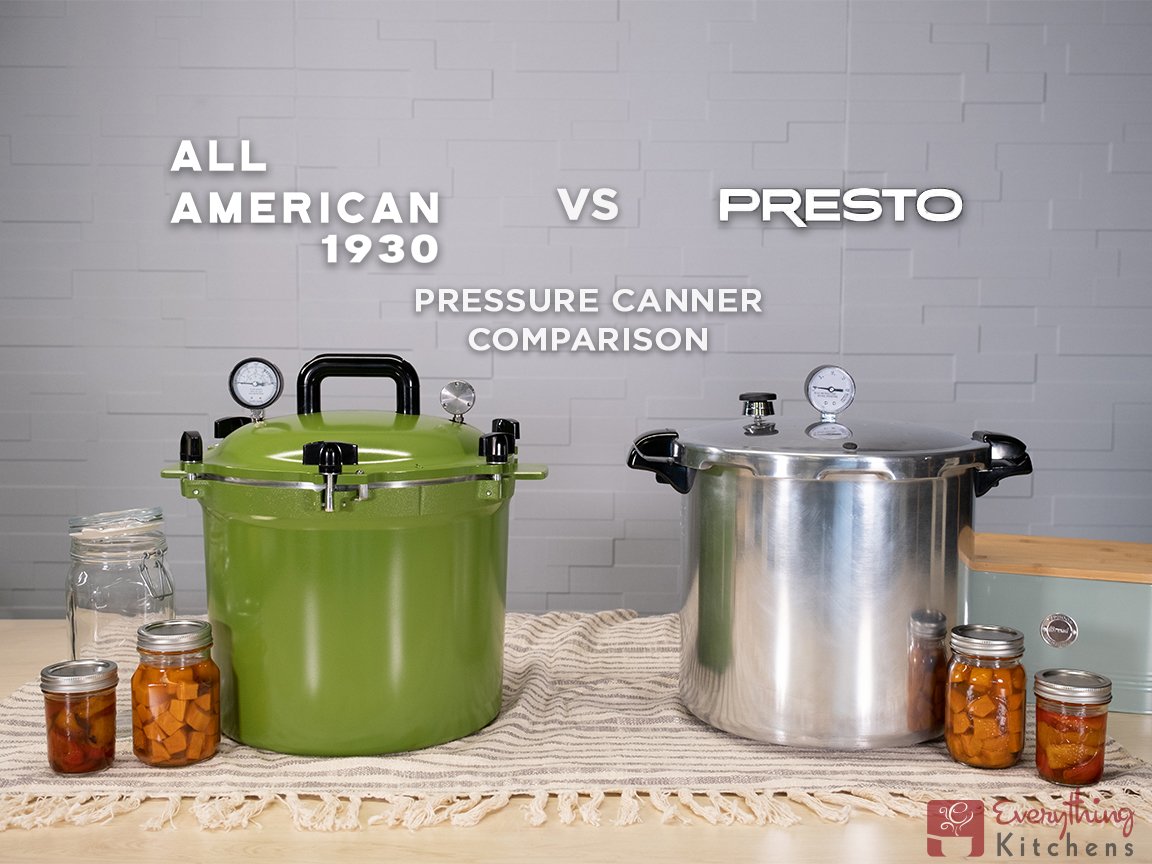
Whether you are a beginning hobby gardener or a seasoned homesteader, it is important to know the best way to properly preserve your seasonal crops. With a little help from the right tools, you can easily fill your cabinets or pantry shelves with homegrown and home-raised foods that will keep for up to a year or longer. All American 1930 and Presto offer some of the most trusted pressure canners available. Each of these brands has stood the test of time for nearly a century, but what has kept these canners in kitchens for generations? We tested the All American 1930 No. 921 Pressure Canner and the Presto 23-Quart Pressure Canner to compare the usability and quality so you can better decide which canner best fits the needs of your home preservation goals.
What Pressure Canner Should I get? Everything Kitchens' Conclusion:
Best for Budding Homesteaders:
If you are canning-curious and not sure you’ll make canning a permanent part of your lifestyle, the Presto Pressure Canner is a cost-effective entry-level option that will get the job done right.
Best for Canning Connoisseurs:
If you plan on canning season after season, are looking to upgrade your current canning arsenal, or want the most lifetime-cost effective and best canner on the market, the All American 1930 No.921 Pressure Canner is the choice for you.
Shop Top Pressure Canners
The All American 1930 No. 921 vs. The Presto 23 Qt. At A Glance:
| Canner | All American 1930 No. 921 Pressure Canner | Presto 23 Qt. Pressure Canner |
| Capacity |
21.5 Qt. Pints: 19 Standard / 16 Wide Mouth Quarts: 7 Standard / 7 Wide Mouth |
23 Qt. Pints: 20 Standard / 16 Wide Mouth Quarts: 7 Standard / 7 Wide Mouth |
| Sealing System | Metal-to-Metal | Rubber Gasket |
| Aluminum Gauge |
12mm* (*At Thickest Point) |
7mm* (*At Thickest Point) |
| Extra Maintenance Required | Metal-to-Metal Sealing System Will Need to Be Oiled Periodically | Rubber Gaskets Will Need to Be Replaced Periodically |
| Stovetop Compatibility |
Gas, Coil Top, and Electric Glass Top* (*Canner Models 925 and Under Only) |
Gas, Coil Top, and Electric Glass Top |
| Induction Compatible |
No* (*Compatible with the Use of Induction Plate) |
Yes* (*Induction Model Required) |
| Accessories Included | (2) Canning Racks | (1) Canning Rack |
| Colors | 7 Color Options | 1 Color Option (Polished Aluminum) |
| Made in the USA | Yes | No |
Size Comparison
When comparing the sizes of the No.921 and the Presto 23 Qt., the canners land neck-and-neck. While the Presto has a 1.5 Qt. advantage over the No.921, the manufacturer-recommended jar capacities are comparable. When looking at each brand as a whole, All American 1930 has a wide range of sizes available from small to large, making it a versatile option for preserving small or large amounts of food throughout the seasons. Presto, however, has only two sizes: the 23 Qt. Pressure Cooker and a 16 Qt. Model. This makes Presto less overwhelming for beginner canners looking to make a decision on which canner is best.
Color Availability
If you’re conscious of your kitchen aesthetic or enjoy bringing color into every corner of your home, the No.921 will be the better choice for you. Whereas the Presto 23 Qt. only comes in a polished aluminum finish, All American 1930 offers their No. 921 Pressure Canner in a satin finish aluminum as well as a wide range of color options. The proprietary, premium cookware-grade coating on the colored models is designed to last more than a lifetime, making them a great investment that can be passed on to the next generation of homesteaders in your family.
Construction Quality
Both the All American 1930 No.921 and the Presto 23 Qt. Pressure Canners are made from high-quality, heavy-duty aluminum. Aluminum is commonly used in pressure cookers because it is warp-resistant and extremely heat conductive. The lightweight construction makes it easier to transfer the cooker when it's time to remove it from the heat. The No.921 and the Presto Pressure Canner differ in aluminum thickness (also referred to as gauge). While the cookers are similar in wall thickness, the No.921 features reinforced rims, making its thickest points 12mm. This allows for longevity of use as well as added safety assurance. Further differences between the models include the handle construction. While the Presto Pressure Canner features convenient plastic side handles that act as the lid lock, the All American 1930 No.921 features 6 locking wingnuts that line the cooker's diameter and a handle on top of the cooker. While the locking handles of the Presto Pressure Canner ensure proper alignment and easy sealing, the handle placement of the No.921 allows for safer operation, keeping your hands at a greater distance from rising steam when removing the lid.
Sealing Style
A key difference between the Presto Pressure Canners and the All American 1930 Pressure Canners is the sealing style. Presto uses a traditional sealing system that uses rubber gaskets between the lid and the base. While the gaskets ensure a fully pressurized seal, they also can break down over time due to heat exposure. After several uses, the gaskets can crack or melt and will need to be replaced over time. In comparison, The All American 1930 Pressure Canners feature an exclusive metal-to-metal sealing system that requires no gaskets. The positive action clamping locks seal the lid to the cooker to allow pressure to build. This means there are no parts to replace over time, however, the wingnuts will need to be greased with a petroleum jelly periodically to ensure a proper seal.
Stovetop Compatibility
Both the No.921 Pressure Canner and the Presto Pressure Canner are compatible with gas and coil stoves. All of Presto’s Pressure Canners are compatible for use with glass stovetops, however, only All American 1930’s No. 925, No. 921, No. 915, and No. 910 are safe for use with glass stovetops since the larger units can damage the stove. Presto makes an induction-compatible model of their 23 Qt. Pressure Canner which features a stainless steel-clad base to allow for use with most induction ranges. All American 1930 does not make an induction-compatible pressure cooker, however, models No.925, No. 921, No. 915, and No. 910 can be used with an induction plate to make them induction compatible. The models larger than the No.925 could cause damage to the induction stovetop.
Head-to-Head Test: All American 1930 No.921 Pressure Canner vs. Presto 23 Qt. Pressure Canner
To offer a more thorough look at the differences between the Presto and All American 1930 Pressure Canners, we put them head-to-head and compared their results on a variety of tasks to answer the following questions:
- How difficult is the setup process?
- How long do the canners take to reach the desired pressure?
- How much do you have to do to regulate pressure?
- How long is the cool-down process?
- How successful are the canning results?
After completing a canning process with each of the pressure canners, we gathered our final thoughts so you can make a confident decision when deciding which canner will be a better fit for your kitchen.
Getting Setup
Getting each canner setup is a similar process. To get started with either the All American 1930 or Presto Pressure Canners, simply place the canner on the stove and fill with 3 quarts of water. Next, add a canning rack to the bottom of the canner. Adding a canning rack is important, as this prevents the jars from direct contact with the base which could result in cracked or shattered jars. Both units can be double-stacked with jars with the use of an additional canning rack. All American 1930’s canner comes with 2 canning racks, while Presto’s canner only comes with one. Presto does, however, make a Replacement Canning Rack that is available for purchase.
The main difference when getting started between the Presto and the All American 1930 pressure canner is the lid design. Presto’s lid has a more traditional design with side handles that also lock the lid in place and a gasket that ensures a proper seal. The lid of the No.921 and other All American 1930 pressure canners, however, features an exclusive metal-to-metal sealing system that uses screw-in wingnuts to keep the lid in place and sealed to the base.
With Presto, you must make sure the gasket is clean, clear of defects, and installed correctly into the lid. Make sure the gauge is tightly fastened onto the top as well. To install the lid, simply line up the clearly marked arrows on the lid and canner and twist to lock. The Presto lid has a small air vent/cover lock that automatically pops up when pressure is present and pops down when no pressure is present, making for a clear & convenient visual indicator.
The All American 1930 Pressure Canners are designed without a gasket. To get started, All American 1930 recommends lightly oiling the rim with olive oil or petroleum jelly (the use of other cooking oils is not recommended as they can gum up over time and damage the integrity of the seal). To secure the lid, align the arrow on top of the lid a quarter inch away from the carved-out notch on the base, then slightly twist the lid so that the clamps lock with the base (where the arrow now is inline with the notch). Afterward, evenly wiggle the lid to ensure it is level with the bottom. A small gap between the lid and base will be present and must be even across the canner. At this point, the lid is ready for securing with the wingnuts. While it takes a little more effort and has a bit of a learning curve for the first few uses, the No. 921 canner lid feels incredibly secure once installed.
Pressure Building
Getting each pressure canner to reach the desired pressure is a similar process for both All American 1930 & Presto. Once your jarred food is placed inside the canner, bring the water to a simmer (180°F). Once the water is simmering, install the lid, crank up the heat, and allow steam to bellow out of the vent pipe for 10 minutes. This will allow as much air to escape as possible. Next, place the weight on the vent pipe and wait for the canner to reach the desired pressure. In our test, both canners brought 3 quarts of water to a boil. After the lids were installed and both units steamed for 10 minutes, the weight was applied. The All American 1930 No.921 came up to pressure in just 1 minute & 15 seconds, while the Presto canner took 4 minutes & 15 seconds.
How Much Did We Have To Do To Regulate Pressure?
Pressure cookers need to maintain a steady pressure during the canning process to keep the cooker at a high enough temperature to kill harmful bacteria and to ensure a proper seal. Once the All American 1930 and Presto pressure cookers were up to temperature, it was our job to ensure they did not go over or under the correct pressure. Regulating pressure requires finding the “sweet spot” heat setting on your stove, which will allow for just enough heat to keep the pressure steady without letting pressure levels fluctuate.
Identifying the pressure levels of the Presto canner requires only the dial gauge. We used a high heat setting to get the Presto up to pressure. Once we approached the desired pressure, we lowered the temperature to medium-low and watched the gauge slow down and stop at our desired pressure which was 11psi. We watched the pressure gauge for the next few minutes, and only had to adjust it a little bit to find the position where the pressure was at a constant. While the dial gauge is accurate, it can diminish in accuracy over time. The dial gauge should be tested once a year by your local county extension office to ensure accuracy.
With the All American 1930 No.921 pressure cooker, you need to listen to the pressure regulator weight to see if you have enough pressure. As the pressure is rising, the weight will begin to jiggle from the pressure within and make a rattling noise. The weight should jiggle 1-4 times per minute when you are at the correct pressure. The No.921 also has a dial gauge that is accurate within +/-2psi, but the weight is more accurate. We also used a high heat setting to get the No.921 up to pressure. When it was close to the desired pressure, we reduced the heat to medium-low and watched the gauge slow down and stop at our desired pressure of 10psi. It was harder to find the perfect temperature to produce 1-4 jiggles per minute on my first use of the No.921. The weight was not jiggling despite the pressure gauge reading 10psi, so we turned up the heat a bit and got constant jiggling (which is too much pressure). We did eventually find the sweet spot for our stove after lowering it again and didn’t have to touch it for the remainder of the cook. We did another test batch of food with the No.921, and it was much easier to find the perfect temperature to maintain pressure the second time around.
Cool Down Time
Once the cooking time was complete, the burners were turned off and we waited for the pressure of each canner to release. You will know that your canner is fully depressurized when the gauge reads “0.” The Presto pressure cooker has a small air vent/cover lock that automatically pops up when pressure is present and will pop down when no pressure is present. Even though our gauge read “0,” we did have to wait for this device to pop down before we could remove the weight.
The No.921 took 10 minutes to fully depressurize, while the Presto took 17 minutes. After the pressure cookers depressurize, the weights can be removed.
All American 1930 recommends waiting 2 minutes after the weight is removed before removing the lid in order to make sure all pressure is released. Presto also recommends this process, but instead says to wait 10 minutes before opening the canner after the weight has been removed. Never try to speed up the cooling process by removing the weight early or running water over the canner. If improperly cooled, jars can siphon out liquid or burst, causing food loss.
Canning Results
The great news is that both canners performed as they promised. Both the Presto 23 Qt. and the No.921 yielded fully sealed jars with no major issues or broken jars. Both canners are similar in size, so we were able to test the same amount of jars in each canner. Each batch came out of the canner looking identical, giving them equal marks in performance ability.
Which One Was Better To Use? Overall Thoughts & Comparisons
Pressure canning may seem intimidating, but thankfully both Presto and All American 1930 offer products that make it safe and simple to begin. There will be a learning curve for beginners with all pressure canners, but you'll feel more confident using either model after just one use. When comparing the performances of each canner, they land neck-and-neck. Presto’s lid design allowed for slightly easier operation, however, installing the lid of the No.921 became easier with multiple uses. As far as maintaining the pressure while canning, the Presto initially seemed like the winner due to the easy-to-read dial gauge. However, we grew to prefer the No.921’s jiggling weight because we can audibly tell that the canner is doing its job without stopping to check the gauge. This allows time for tidying the kitchen or other food prep tasks while waiting on the canned food to process rather than having to continually monitor a gauge to ensure the canner is working properly. In addition to the convenience, we can feel more confident that food is processed safely due to the weighted gauge being more accurate than the dial gauge.
While each canner performed successfully during our test, both models offer features that cater to different needs and experience levels. If you are just beginning to learn about food preservation, planning to plant your first garden, or are looking for a more cost-effective option to begin your canning journey, Presto will be the better choice for you. If you are someone looking to upgrade your current pressure cooker collection, are experienced in food preservation, or are interested in adding pieces to your kitchen that will last generations, the All American 1930 No.921 will be the better fit for you.
Lifetime Ownership Costs Comparisons At A Glance
Lifetime Ownership with Presto
- With Presto, you will have to replace the gasket over time. It will become brittle, gummy, or melt eventually and need to be replaced. There are also gaskets underneath the pressure gauge that need to be checked and possibly replaced periodically as well.
- You will need to purchase an Additional Canning Rack if you want to double-stack your jars while canning.
- You will need to get your gauge checked and calibrated once a year for accuracy at your county extension office.
- Over-pressure valve may need to be replaced over time.
Lifetime Ownership with All American
- Exclusive metal-to-metal sealing system prevents the need to replace or clean gaskets.
- Wingnuts will need to be lightly greased with petroleum jelly every once in a while to maintain the integrity of the seal.
- Over-pressure valve may need to be replaced over time.
Overall, you will have to continually purchase more gaskets and replaceable parts for a Presto pressure cooker compared to an All-American pressure cooker. Also, remember that the dial gauge on the Presto should be tested once a year by your local county extension office to ensure accuracy. The cost upfront for a Presto is less expensive, but you will have to put more money into it and also spend time checking the unit for accuracy. Compare this to the All American 1930 experience where no gaskets are required to be purchased and the weighted pressure gauge always stays accurate.


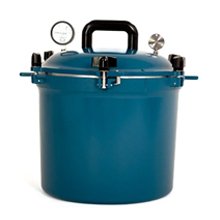
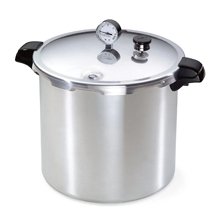
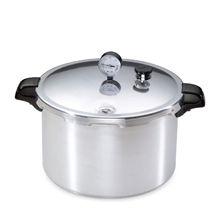
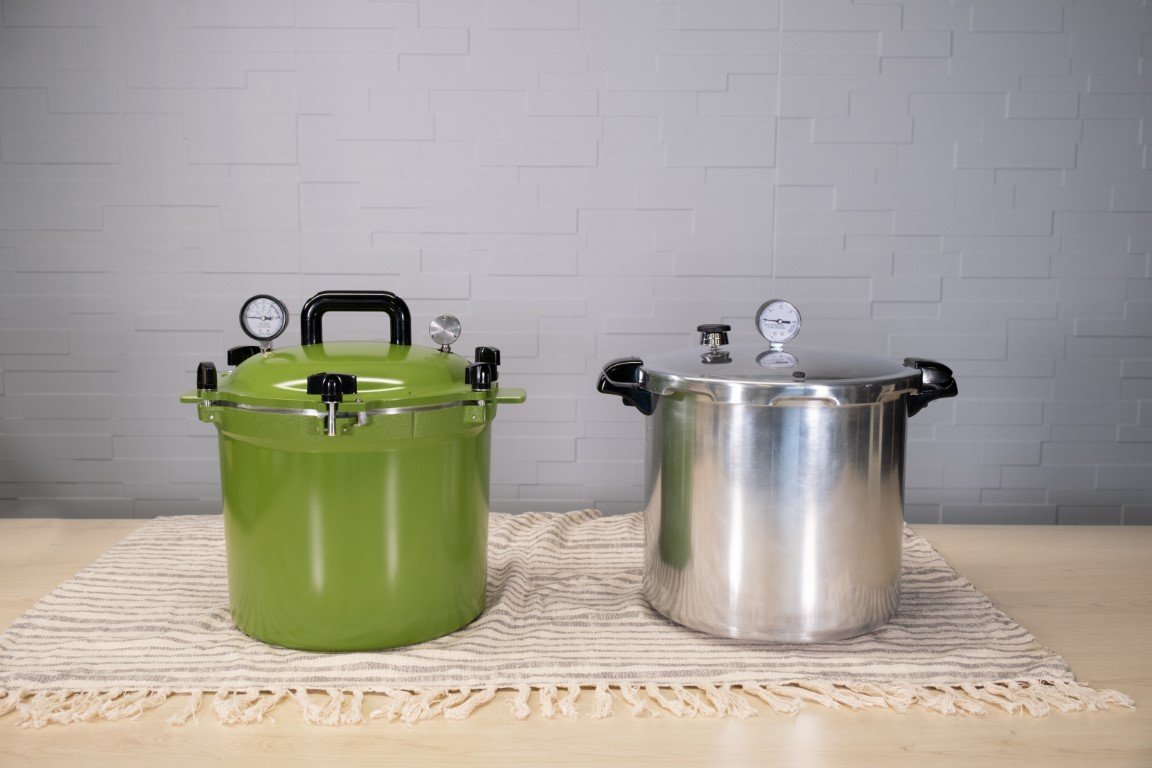


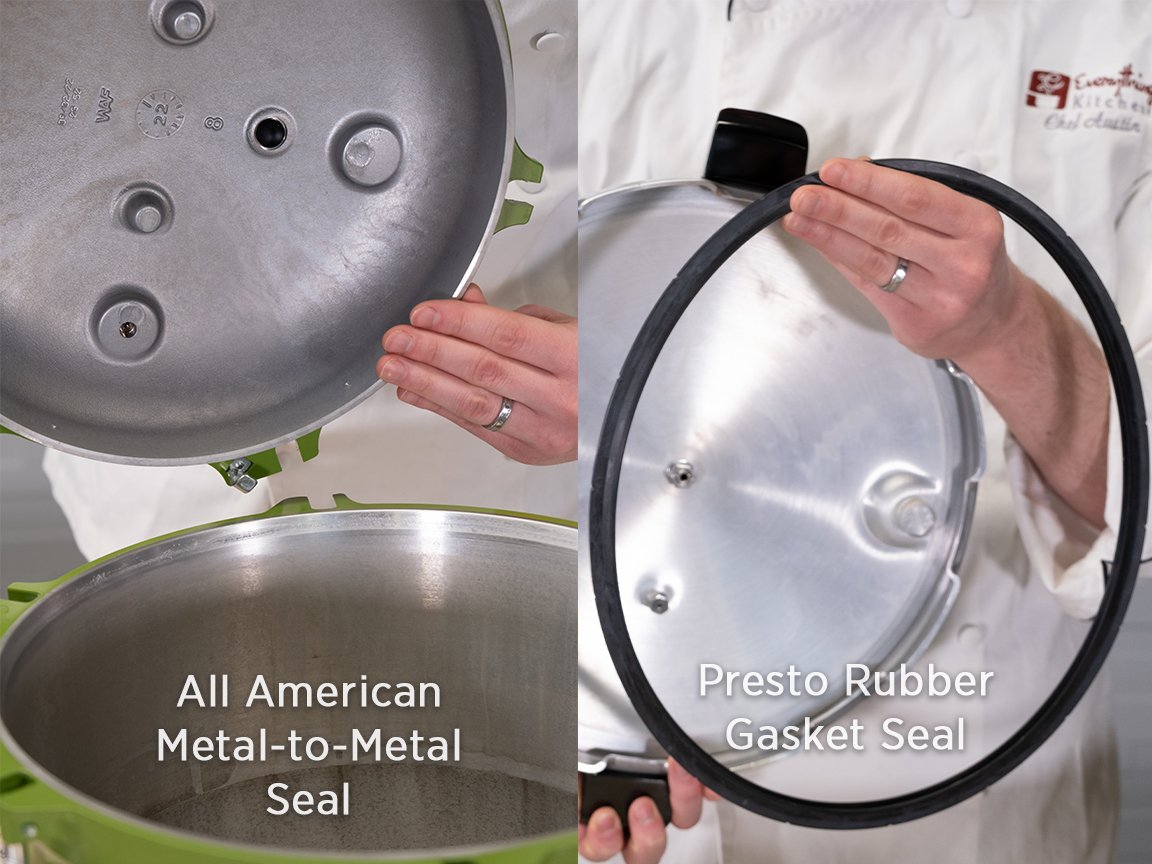
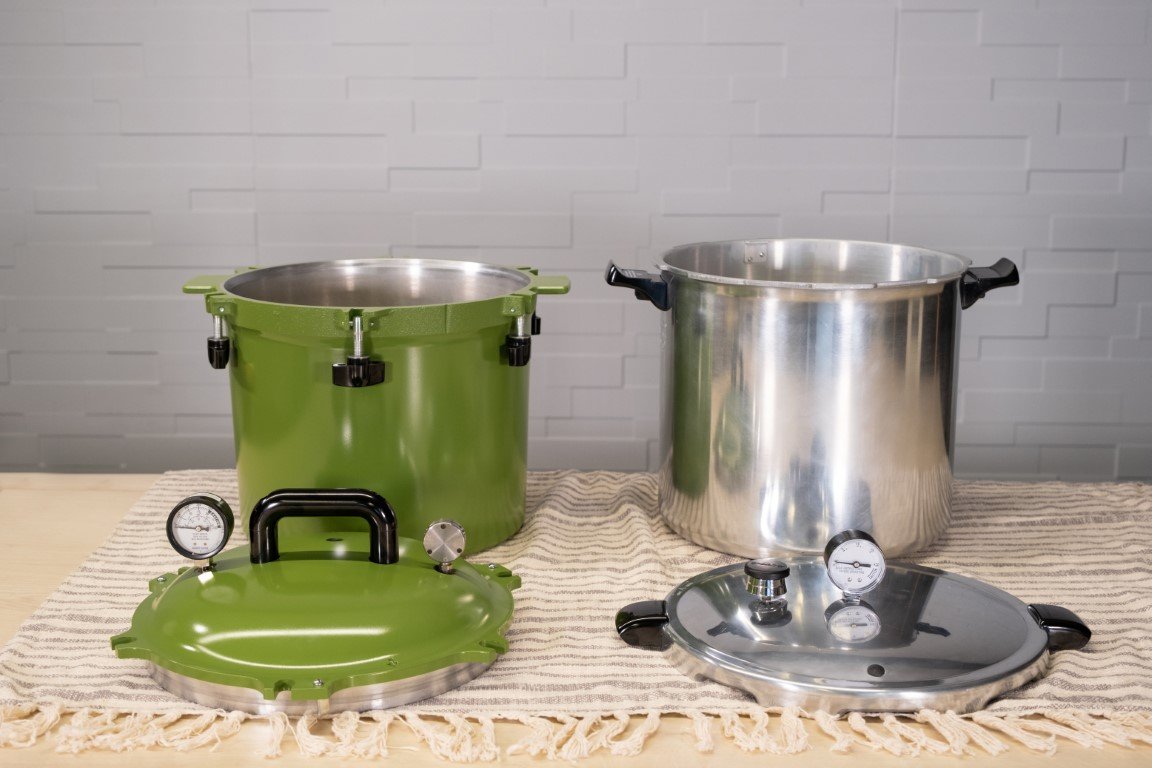

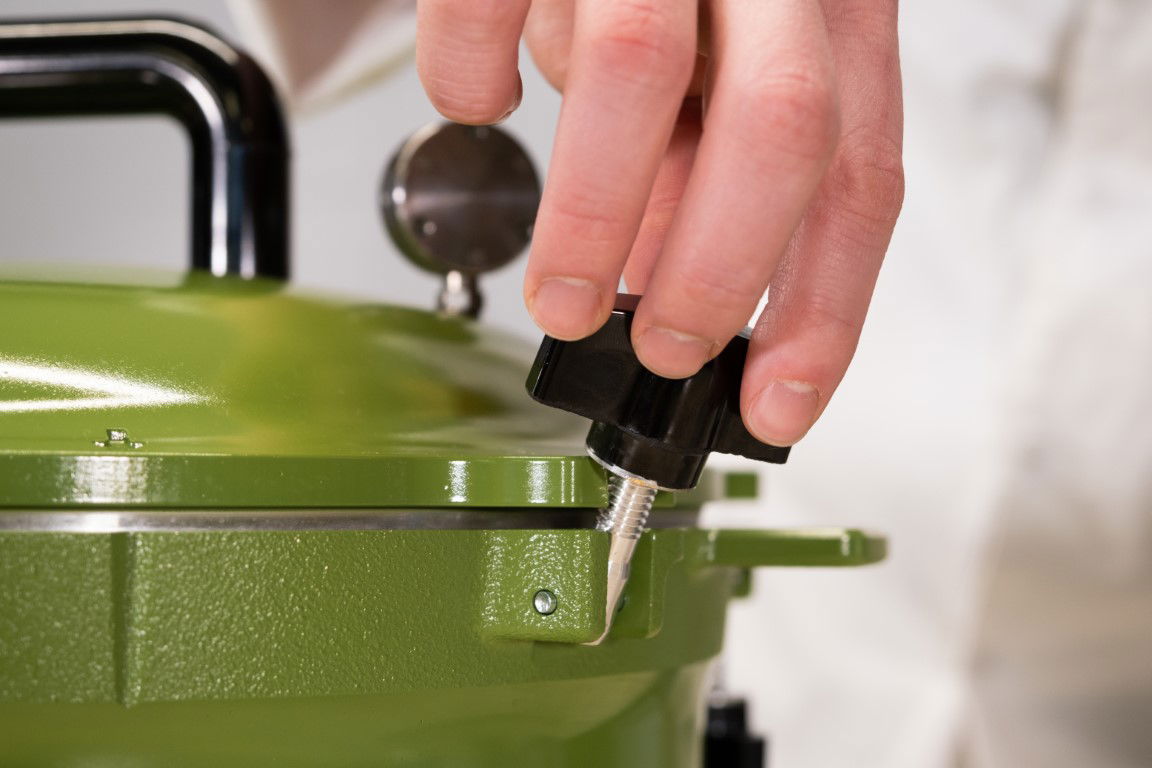
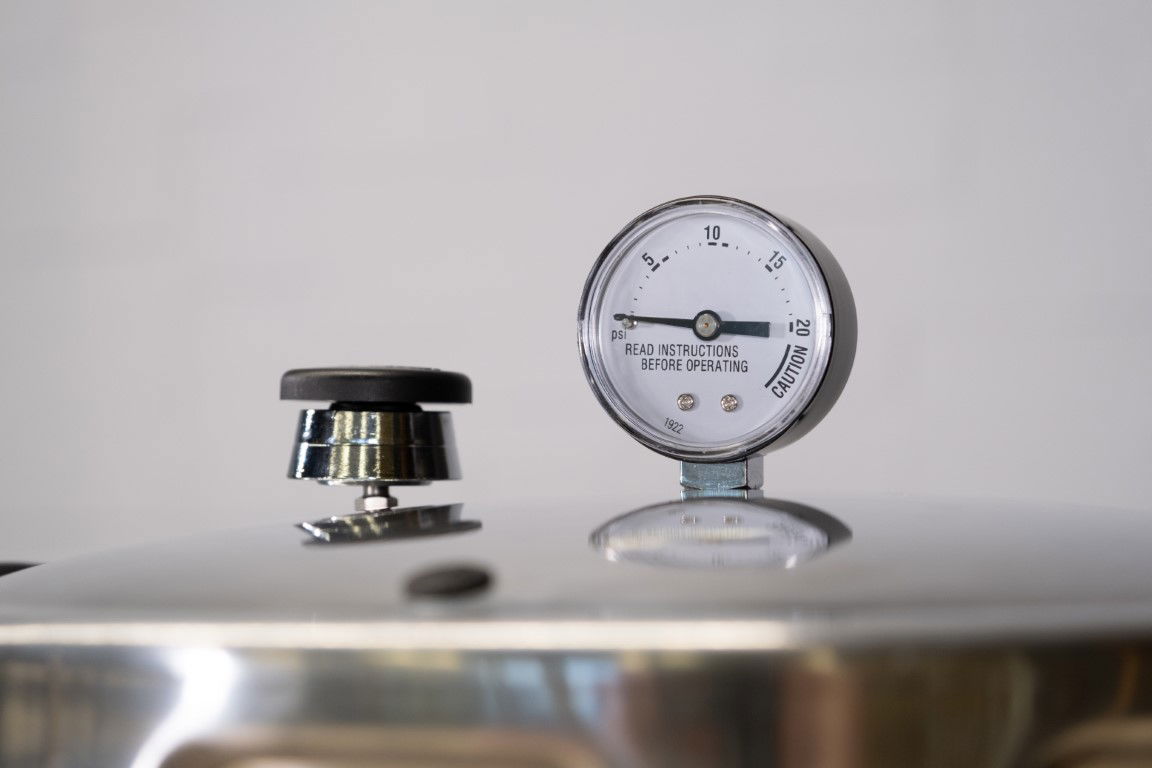
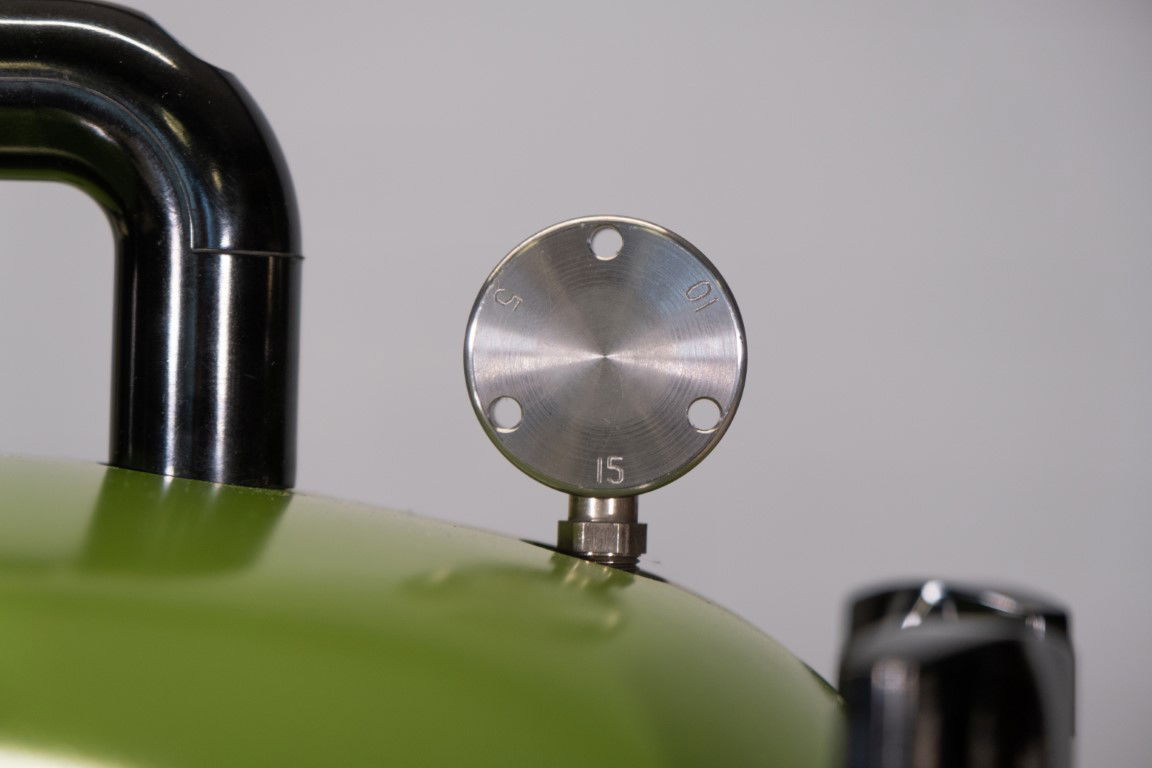
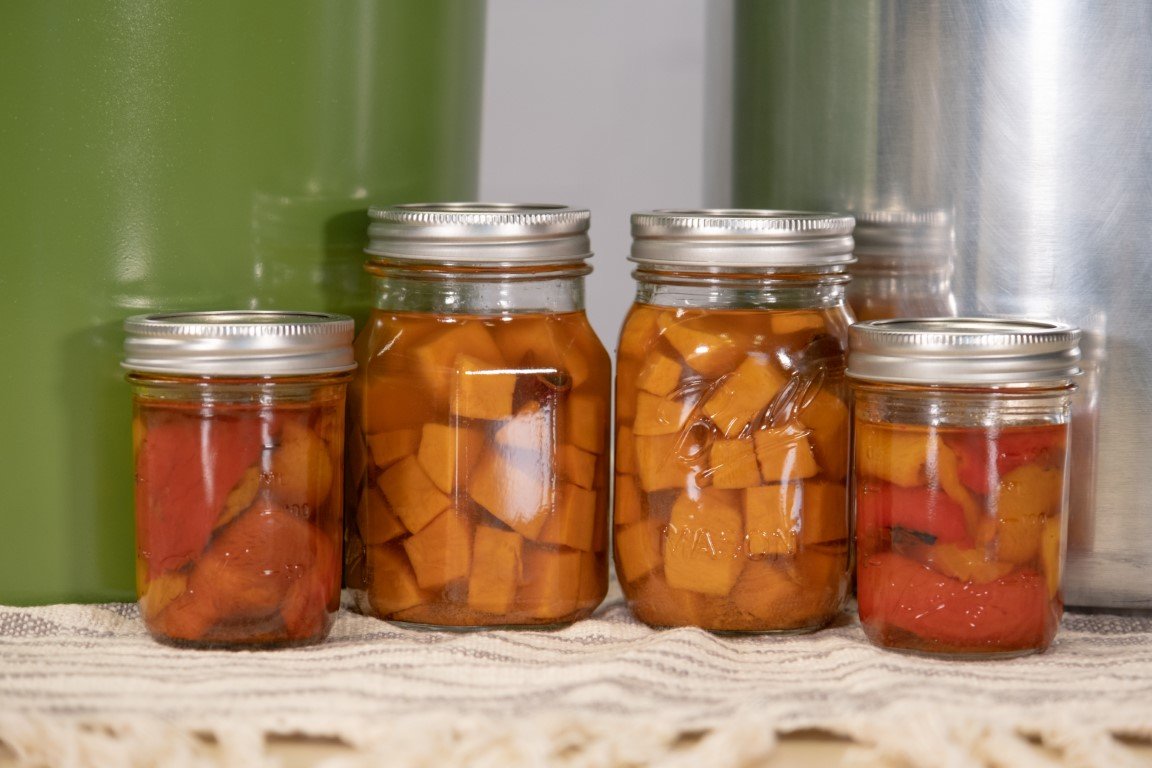
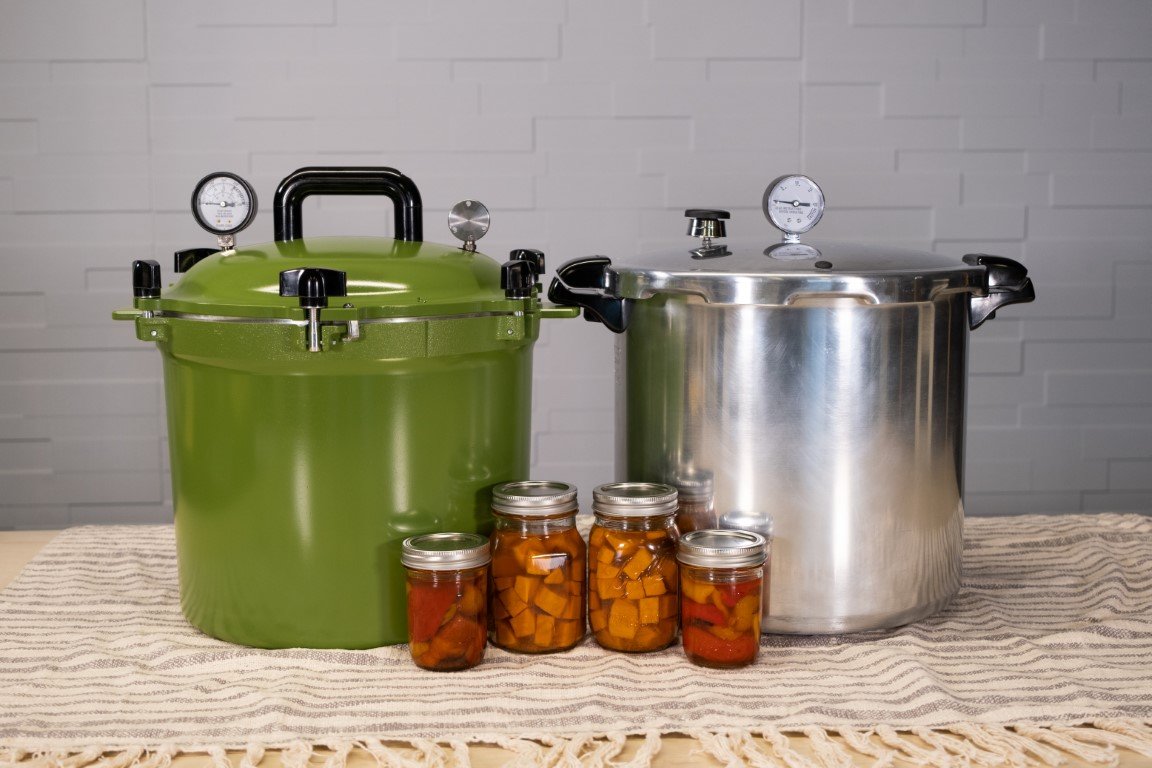
 KitchenAid
KitchenAid Fiesta®
Fiesta® Bosch
Bosch All-Clad
All-Clad Cuisinart
Cuisinart OXO
OXO Le Creuset
Le Creuset Blendtec
Blendtec Wusthof
Wusthof Bormioli Rocco
Bormioli Rocco Vitamix
Vitamix Emile Henry
Emile Henry DeLonghi
DeLonghi Mason Cash
Mason Cash Nordic Ware
Nordic Ware ZWILLING
ZWILLING Kilner
Kilner Staub
Staub Swiss Diamond
Swiss Diamond TeakHaus
TeakHaus Ankarsrum
Ankarsrum LEM
LEM Weston
Weston Moccamaster
Moccamaster Mercer
Mercer All American 1930
All American 1930 CucinaPro
CucinaPro SMEG
SMEG Toddy
Toddy Everything Kitchens
Everything Kitchens
